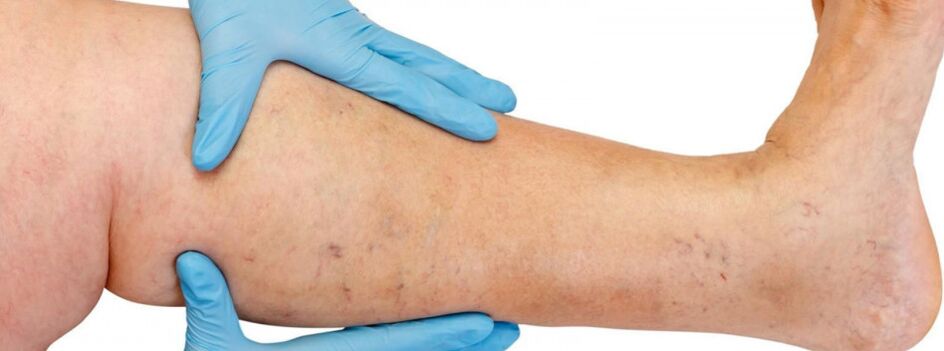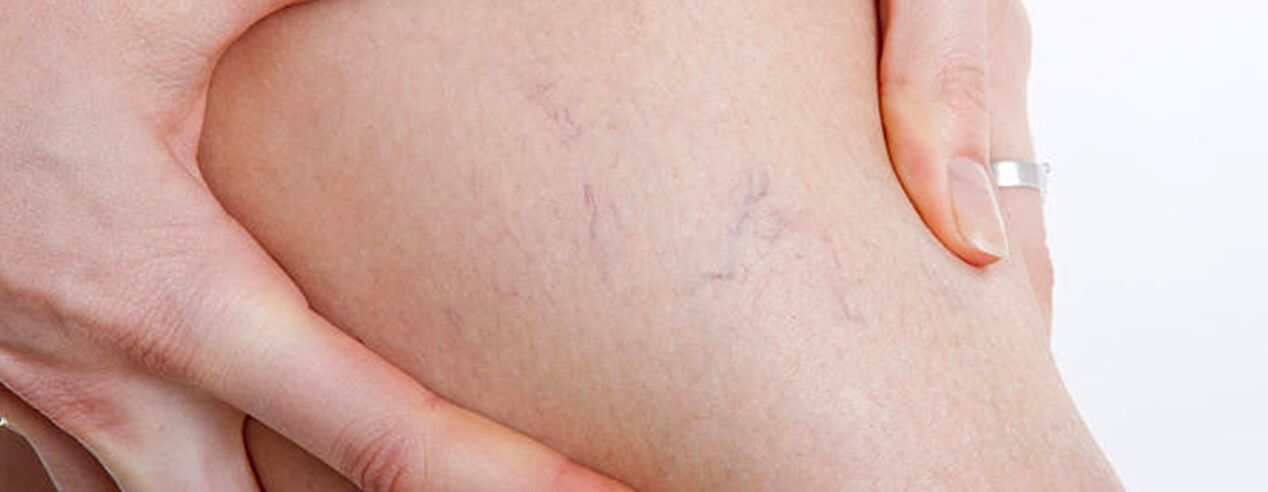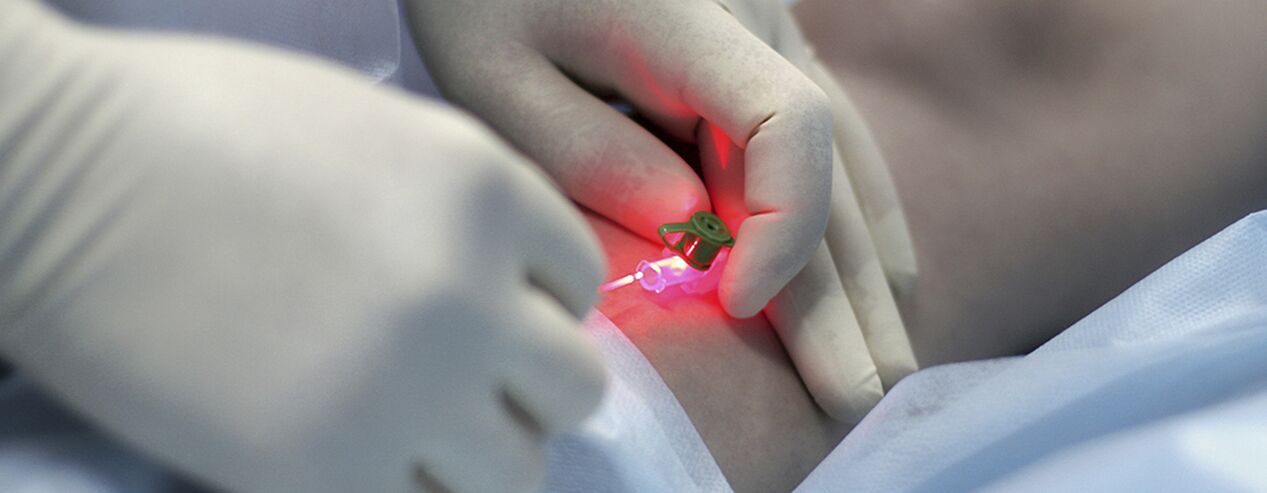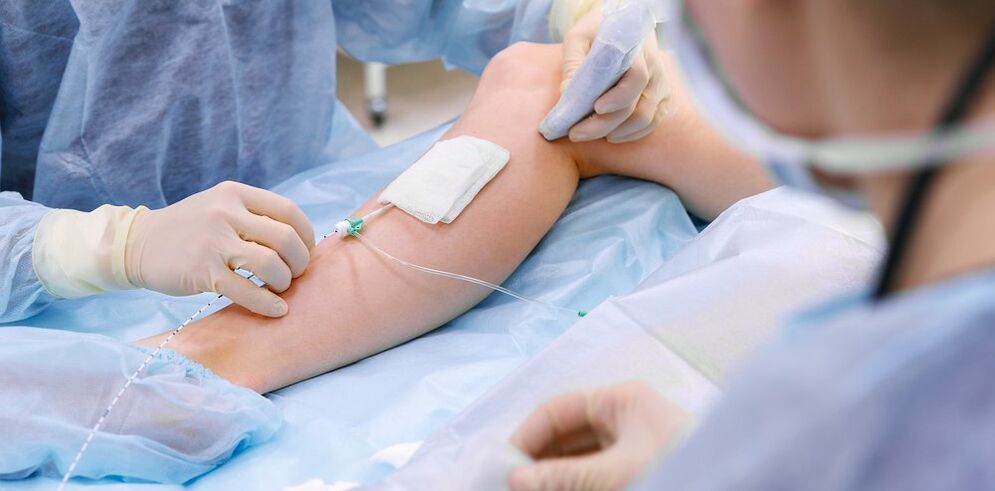
The anatomical structure of the venous system of the lower extremities is quite variable. Knowing the individual characteristics of the structure of the venous system plays an important role in evaluating instrumental examination data in choosing the right treatment method.
The veins of the lower extremities are divided into superficial and deep. The superficial venous system of the lower extremities starts from the venous plexuses of the fingers, which form the venous network of the back of the leg and the dorsal arch of the skin of the leg. The medial and lateral marginal veins arise as they drain into the greater and lesser saphenous veins, respectively. The great saphenous vein is the longest vein in the body, consisting of 5-10 pairs of valves, normally 3-5 mm in diameter. It begins in the lower third of the lower leg in front of the medial epicondyle and ascends in the subcutaneous tissue of the lower leg and thigh. In the groin, the great saphenous vein drains into the femoral vein. Sometimes a large saphenous vein of the thigh and lower leg can be represented by two or even three trunks. The small saphenous vein starts from the lower third of the lower leg along the lateral surface. In 25% of cases, it flows into the popliteal vein in the region of the popliteal fossa. In other cases, the lesser saphenous vein may rise above the popliteal fossa and drain into the femoral, greater saphenous veins, or into the deep vein of the thigh.
The deep veins of the dorsal foot originate from the dorsal metatarsal veins of the foot, flow into the dorsal venous arch of the foot, from where blood flows into the anterior tibial veins. At the level of the upper third of the lower leg, the anterior and posterior tibial veins merge to form the popliteal vein, which is located to the side and slightly behind the artery of the same name. In the region of the popliteal fossa, the small saphenous vein, the veins of the knee joint flow into the popliteal vein. The deep vein of the thigh usually drains into the femur 6-8 cm below the groin. Above the inguinal ligament, this vein receives the epigastric vein, the deep vein surrounding the ilium, and passes into the external iliac vein, which joins the internal iliac vein at the sacroiliac joint. The paired common iliac vein begins after the union of the external and internal iliac veins. The right and left common iliac veins join to form the inferior vena cava. It is a large bowl without valves, 19-20 cm long and 0. 2-0. 4 cm in diameter. The inferior vena cava has parietal and visceral branches, through which blood flows from the lower extremities, lower trunk, abdominal organs and pelvis.
Perforating (communicating) veins connect deep veins with superficial veins. Most of them have valves located suprafascially, thanks to which blood moves from superficial veins to deep ones. There are direct and indirect perforating vessels. Direct lines connect the deep and superficial venous networks directly, and the indirect ones are connected indirectly, that is, they flow first to the muscular vein, and then to the deep.
The vast majority of perforating veins arise from the branches of the great saphenous vein, not the trunk. In 90% of patients, the perforating veins of the medial surface of the lower third of the leg are incompetent. In the lower leg, the most common defect is the perforating veins of Coquet, which connect the posterior branch of the great saphenous vein (vein of Leonardo) with the deep veins. In the middle and lower third of the thigh, there are usually 2-4 most permanent perforating veins (Dodd, Gunther) connecting the trunk of the great saphenous vein with the femoral vein. With varicose transformation of the small saphenous vein, incompetent communicating vessels are most often observed in the area of the middle and lower third of the lower leg and the lateral malleolus.
Clinical course of the disease

Varicose veins mainly occur in the great saphenous vein system, less often in the small vein system, and start from the branches of the vein trunk on the lower leg. In the initial stage, the natural course of the disease is quite favorable, the first 10 years or more, apart from the cosmetic defect, nothing can bother the patients. In the future, if timely treatment is not carried out, complaints of heaviness, fatigue in the legs and swelling after physical exertion (long walk, standing) or in the afternoon, especially in the hot season, begin to join. Most patients complain of pain in the legs, but during detailed questioning it turns out that it is a feeling of fullness, heaviness and fullness in the legs. Even with a short rest and a high position of the limb, the intensity of the sensations decreases. These are the symptoms that characterize venous insufficiency at this stage of the disease. If we talk about pain, other causes (arterial insufficiency of the lower limbs, acute venous thrombosis, joint pain, etc. ) should be excluded. The further development of the disease, in addition to the increase in the number and size of dilated vessels, the addition of incompetence of the perforating vessels and the formation of valvular insufficiency of the deep vessels leads to the occurrence of more frequent trophic disorders.
With a lack of perforating vessels, trophic disorders are limited to any surface of the lower leg (lateral, medial, posterior). At the initial stage, trophic disorders are manifested by local hyperpigmentation of the skin, then thickening (induration) of subcutaneous fat is added to the development of cellulite. This process ends with the formation of an ulcer-necrotic defect, which can reach a diameter of 10 cm or more and extends to the depth of the fascia. The typical site of appearance of venous trophic ulcers is the region of the medial malleolus, but the localization of ulcers on the lower leg can be varied and multiple. In the stage of trophic disorders, severe itching and burning in the affected area are combined; some patients develop microbial eczema. Although severe in some cases, the pain in the ulcer area cannot be expressed. At this stage of the disease, heaviness and swelling in the leg are permanent.
Diagnosis of varicose veins
It is especially difficult to diagnose the preclinical stage of varicose veins, because such a patient may not have varicose veins in his legs.
In such patients, the diagnosis of varicose veins of the legs is erroneously rejected, although the symptoms of varicose veins, signs indicating that the patient has relatives suffering from this disease (hereditary predisposition), ultrasound data on the initial pathological changes in the venous system.
All this can lead to missed deadlines for the optimal start of treatment, the formation of irreversible changes in the venous wall and the development of very serious and dangerous complications of varicose veins. Only when the disease is recognized at an early preclinical stage, it is possible to prevent pathological changes in the venous system of the legs through a minimal therapeutic effect on varicose veins.
Avoiding various types of diagnostic errors and making a correct diagnosis is possible only after a thorough examination of the patient by an experienced specialist, a correct interpretation of all his complaints, a detailed analysis of the history of the disease and the maximum possible information. state-of-the-art equipment (instrumental diagnostic methods) about the condition of the venous system of the legs.
A duplex scan is sometimes performed to determine the exact location of the perforating vessels, and veno-venous reflux is color-coded. In the case of failure of the valves during the Valsava test or compression tests, their leaflets stop closing completely. Valve deficiency leads to the appearance of veno-venous reflux, high, through the incompetent saphenofemoral fistula, and low, through the incompetent perforating veins of the leg. Using this method, it is possible to record reverse blood flow through the prolapsed leaflets of an incompetent valve. Therefore, our diagnosis is multi-stage or multi-level. In a normal case, the diagnosis is made after ultrasound diagnostics and examination by a phlebologist. However, in particularly difficult cases, the examination should be carried out step by step.
- first, a thorough examination and questioning is carried out by a phlebologist surgeon;
- if necessary, the patient is sent to additional instrumental research methods (duplex angioscanning, phleboscintigraphy, lymphoscintigraphy);
- patients with accompanying diseases (osteochondrosis, varicose eczema, lymphovenous insufficiency) are invited to consult with leading specialist consultants on these diseases) or additional research methods;
- All patients who require surgery are pre-consulted by the operating surgeon and, if necessary, the anesthesiologist.
Treatment
Conservative treatment is mainly indicated for patients with contraindications to surgical treatment: due to the general condition, with a slight dilatation of the vessels, causing only cosmetic discomfort, when surgical intervention is refused. Conservative treatment is aimed at preventing further development of the disease. In these cases, patients should be advised to wrap the affected surface with an elastic bandage or wear elastic socks, periodically give the legs a horizontal position, and do special exercises for the legs and lower legs (flexion and extension in the ankle and knee joints). to activate the musculo-venous pump. Elastic compression accelerates and strengthens the blood flow in the deep veins of the thigh, reduces the amount of blood in the saphenous veins, prevents the formation of edema, improves microcirculation and helps to normalize metabolic processes in tissues. The bandage should be started in the morning, before getting out of bed. The bandage is applied with a slight tension from the toes to the thigh, with forced capture of the joint of the heel and ankle. Each next round of the bandage should cut the previous one in half. It should be recommended to use certified therapeutic knitwear with an individual choice of the degree of compression (from 1 to 4). Patients should wear comfortable shoes with hard heels and low heels, avoid standing for a long time, heavy physical labor, and working in hot and humid places. If the patient has to sit for a long time due to the nature of the production activity, he should be given a raised position, replacing the legs with a special stand at the required height. It is recommended to walk a little every 1-1, 5 hours or rise on the toes 10-15 times. Contraction of the calf muscles improves blood circulation and increases venous flow. During sleep, it is necessary to betray with the legs in a high position.
Patients are recommended to limit water and salt intake, normalize body weight, periodically take diuretics, drugs that improve vascular tone / According to indications, drugs that improve tissue microcirculation are prescribed. We recommend using non-steroidal anti-inflammatory drugs for treatment.
Physical therapy plays an important role in the prevention of varicose veins. In uncomplicated forms, water procedures are useful, especially swimming, warm (not higher than 35 °) foot baths with a 5-10% solution of table salt.
Compression sclerotherapy

Indications for injection treatment (sclerotherapy) for varicose veins are still debated. The method consists of introducing a sclerosing agent into the dilated vessel, further compressing, deflating and sclerosing it. Modern drugs used for these purposes are quite safe, i. e. do not cause necrosis of the skin or subcutaneous tissue when applied extravasally. Some specialists use sclerotherapy for almost all forms of varicose veins, while others completely reject this method. Most likely, the truth is obvious, and it makes sense for young women in the early stages of the disease to use the injection method of treatment. The only thing is that they should be warned about the possibility of recurrence (higher compared to surgery), the need to continuously wear a fixation compression bandage for a long time (up to 3-6 weeks), the possibility of several sessions.
The group of patients with varicose veins should include patients with telangiectasia ("spider veins") and reticular dilatation of the small saphenous veins, since the causes of these diseases are the same. In this case, it can be performed along with sclerotherapypercutaneous laser coagulation, but only after excluding lesions of deep and perforating vessels.
Percutaneous laser coagulation (PCL)
It is a method based on the principle of selective photocoagulation (photothermolysis), based on different absorption of laser energy by different body substances. A feature of the method is the non-contact nature of this technology. The focusing supplement concentrates the energy in the blood vessel of the skin. Hemoglobin in the vein selectively absorbs laser rays of a certain wavelength. Under the influence of a laser in the lumen of the vessel, the endothelium is destroyed, which causes the walls of the vessel to adhere.
The efficiency of the PLC directly depends on the penetration depth of the laser radiation: the deeper the vein, the longer the wavelength should be, so the PLC has rather limited indicators. Microsclerotherapy is most effective for vessels with a diameter of more than 1. 0-1. 5 mm. Taking into account the elongated and branched distribution of spider veins on the legs, the variable diameter of the veins, a combined treatment method is actively used: at the first stage, sclerotherapy of veins with a diameter of more than 0. 5 mm is performed, then laser is used to remove the remaining "stars" of smaller diameter. is being
The procedure is virtually painless and safe (no skin cooling or anesthetics are used) because it is lighthardwarerefers to the visible part of the spectrum, and the wavelength of the light is calculated so that the water in the tissues does not boil and the patient does not burn. Patients with high sensitivity to pain are recommended to apply a cream with a local anesthetic effect beforehand. Erythema and edema disappear after 1-2 days. After the course, for about two weeks, some patients may notice darkening or lightening of the treated area of the skin, which then disappears. In people with light skin, the changes are almost imperceptible, but in patients with dark skin or strong tanning, the risk of such temporary pigmentation is quite high.
The number of procedures depends on the complexity of the case - the blood vessels are located at different depths, the lesions may be insignificant or occupy a fairly large surface of the skin - but usually no more than four sessions of laser therapy (5-10 minutes). each) is needed. In such a short time, the maximum result is achieved due to the unique "square" shape of the light pulse of the device, which increases its effectiveness compared to other devices, and at the same time reduces the possibility of side effects after the procedure?
Surgery
For patients with varicose veins of the lower extremities, surgical intervention is the only radical treatment. The purpose of the operation is to eliminate pathogenetic mechanisms (veno-venous reflux). This is achieved by removing the main trunks of the greater and lesser saphenous veins and ligation of the incompetent communicating vessels.
Surgical treatment of varicose veins has a hundred-year history. Previously, and many surgeons still use large incisions for varicose veins, general or spinal anesthesia. The scars after such a "miniphlebectomy" remain a lifelong reminder of the operation. The first operations on veins (according to Schade, according to Madelung) were so traumatic that the damage from them was greater than the damage of varicose veins.
In 1908, an American surgeon came up with the method of saphenous vein ligation using a hard metal probe with olive and vascular infection. In an improved form, this surgical method for removing varicose veins is still used in many public hospitals. Varicose veins are removed by separate incisions as suggested by surgeon Narat. Thus, the classic phlebectomy is called the Babcock-Narata method. Phlebcock-Narath phlebectomy has disadvantages - large scars after the operation and impaired skin sensitivity. Working capacity decreases for 2-4 weeks, which makes it difficult for patients to agree to surgical treatment of varicose veins.
Phlebologists of our network of clinics have developed a unique technology for the treatment of varicose veins in one day. Difficult situations are solved usingcombined technique. The main large varicose veins are removed by inversion peeling, which involves minimal intervention through mini-incisions of the skin (between 2 and 7 mm), which practically does not leave a scar. The use of minimally invasive methods involves minimal tissue trauma. The result of our operation is the elimination of varicose veins with an excellent aesthetic result. We perform combined surgical treatment under total intravenous or spinal anesthesia and the maximum hospital stay is up to 1 day.

Surgical treatment includes:
- Crossectomy - crossing the trunk of the great saphenous vein where it joins the deep venous system.
- Stripping - removal of a varicose vein. Only the varicose vein is removed, not the entire vein (as in the classic version).
ActuallyminiphlebectomyAccording to Narat, it came to replace the method of removing varicose branches of the main veins. Previously, skin incisions from 1-2 cm to 5-6 cm were made along the course of the varix, through which the veins were identified and removed. The desire to improve the cosmetic result of the intervention and to be able to remove veins not through traditional incisions, but through mini-incisions (punctures) forced doctors to develop tools that allow to do almost the same thing with a minimal skin defect. This is how sets of phlebectomy "hooks" of various sizes and configurations and special spatulas appeared. To pierce the skin, they began to use needles with a very narrow blade or a fairly large diameter (for example, a needle used to take venous blood for analysis with a diameter of 18G) instead of an ordinary scalpel. Ideally, after a while, the trace of a puncture with such a needle is practically invisible.
We treat some forms of varicose veins on an outpatient basis under local anesthesia. Minimal trauma during miniphlebectomy, as well as a small risk of intervention, allows this operation to be performed in a day hospital. After the operation, the patient can be allowed to go home after minimal observation in the clinic. In the postoperative period, an active lifestyle is maintained, active walking is encouraged. Temporary disability is usually no more than 7 days, after which it is possible to start work.
When is microphlebectomy used?
- When the diameter of varicose veins of the great or small saphenous vein is more than 10 mm
- After suffering from thrombophlebitis of the main subcutaneous bodies
- After trunk recanalization after other types of treatment (EVLK, sclerotherapy).
- Removal of very large individual varicose veins.
It can be an independent operation or it can be part of the combined treatment of varicose veins, together with laser treatment and sclerotherapy. Application tactics are always determined individually, taking into account the results of ultrasound duplex scanning of the patient's venous system. Microphlebectomy is used to remove veins of various locations, including those on the face, which have been changed for various reasons. Professor Varadi from Frankfurt developed his necessary tools and formulated the basic postulates of modern microphlebectomy. The Varadi phlebectomy method provides excellent cosmetic results without pain or hospitalization. It is very painstaking, almost jewelry work.
After vascular surgery
The postoperative period after the usual "classic" phlebectomy is quite painful. Sometimes large hematomas are disturbing, there is edema. Wound healing depends on the phlebologist's surgical technique, sometimes there is lymph leakage and long-term formation of noticeable scars, often after a large phlebectomy there is a violation of sensitivity in the heel area.
In contrast, after miniphlebectomy, the wounds are not required to be sutured, because they are just punctures, there are no pain sensations, and skin nerve damage is not observed in our practice. However, such results of phlebectomy are achieved only by very experienced phlebologists.
Make an appointment with a phlebologist
Be sure to consult a specialist in the field of vascular diseases.

















